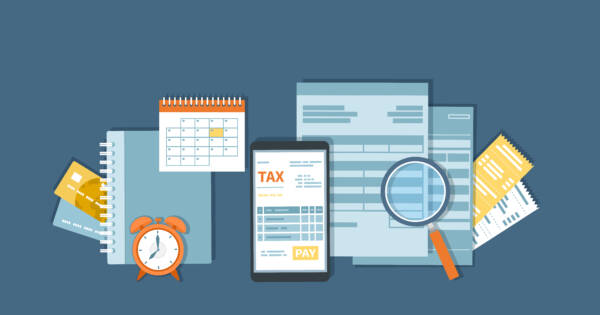Navigating taxes can be difficult no matter where you are in your career. Understanding the differences between W-2 vs. W-4 tax forms can be especially tricky. W-2, W-3, W-4, W-9—it can be hard to admit, but it’s easy for similar names to all blend together. And unless you’re a tax professional and knowing these things is your full-time job, all the forms, lines, and deductions can kind of blend together in our minds.
Fortunately, the tax forms that the average worker will encounter year-to-year are pretty predictable. After you break past the initial confusion, W-2 and W-4 tax forms are fairly straightforward.
Or if you’re used to doing your own taxes as a freelancer, you might be a little out of practice at telling all your tax forms apart. We’re here to chat about the differences between W-2 vs W-4 tax forms so you know exactly what your responsibilities are at every stage of the tax process.
W-2 vs. W-4: You Fill Out The W-4
The best way to remember the difference between forms W-2 and W-4 is to keep track of who fills out what. The W-4 requires you to enter your information so your employer knows how much they should withhold for your taxes. The W-2 form verifies those withholdings for you, but more on that later.
Usually, you fill out a W-4 when you start a new job or when your information changes. If you get married, divorced, have a child, or experience other major life changes, you may end up filling out your W-4 multiple times a year.
You start off by entering basic information, such as your name, address, and social security number. This form also requires you to indicate the company you work for, the company’s address, and other employer information.
Your W-4 is also where you enter any major deductions you have. If there is some reason why the IRS should be charging you less — say for your number of dependents — this is where you declare that for your company.
Deductions Matter
Usually, this only applies when you think your annual deductions will exceed the standard deduction. This requires knowing what your likely deductible expenses will be in advance and supplying this information on your Form W-4 to your employer. Depending on your circumstances, you might be better off claiming the standard deduction when you file your tax return.
Each year, you should tally your available itemized deductions. Then compare them against the value you would receive by simply claiming the standard deduction. You will want to choose the deduction amount which saves you the most on your taxes.
In simple tax situations, you are almost always better off claiming the standard deduction. However, you will want to do an annual comparison to ensure that is still the right choice for you. You don’t want to leave extra money on the table for Uncle Sam to claim if you have a legal right to pay less on your taxes in that tax year.
W-2 vs. W-4: The W-2
Unlike your W-4, your W-2 is filled out by your employer. Typically, your employer gives you your W-2 at the end of the tax year and discloses withholdings. Most employers send this to you via the mail. However, they can also supply this information to you digitally if they know you have the ability to access it. Employers are legally required to send this information by January 31 of the beginning of tax season or they can be subject to penalties and fines from the IRS. Your W-2 also clarifies your earnings and Social Security contribution. You should have one W-2 for every employer that you have had within the taxable timeframe.
Your W-2 allows you to see exactly what your employer has withheld over the year, as well as your exact earnings.
If you believe there is an error on your W-2 form, then you should bring it up with your employer right away. They will need to supply you a corrected Form W-2 immediately, allowing the IRS to know the accurate reporting of the relevant tax information for your individual tax return, as well as for your employer.
Sometimes differences that appear to be errors may not be — such as adjustments for taxable benefits. If you are certain something is incorrect and your employer or former employer is not working with you in good faith to resolve them, then you should contact the IRS for further instructions.
Other “W” Forms
W-2 and W-4 forms are the only ones that most U.S. workers will need to worry about from year to year. However, depending on your situation, there are some others you may encounter.
W-2G is for some gambling winnings.
If you receive government payments like Social Security or unemployment benefits, you can use a W-4V (or voluntary W-4) to request federal income tax withholdings from the payer.
W-3 forms are for businesses only, and they detail all employees, wages, and Social Security Administration contributions.
Freelancers, independent contractors, or otherwise self-employed people will be familiar with form W-9. This is a request for your Taxpayer Identification Number (TIN) you will receive from someone who has paid you more than $600 in the last tax year. Be wary about the W-9s you receive to make sure they came from someone who you know you contracted with, as fake W-9s can sometimes be used for identity theft.
One More Thing
Okay, this last one isn’t a “W” form, but it’s still important for a lot of folks. Whether you freelance full-time or have a side gig, if you receive more than $600 a year in non-wage income, you will likely need to fill out form 1099-MISC or Form 1099-NEC. The IRS changed this form for reporting non-employee compensation starting in tax year 2020. Previously, independent contractors received their compensation information on 1099-MISC, but the IRS has separated this type of payment from 1099-MISC and now requires companies and individuals to report this information on Form 1099-NEC. This allows you to declare any income you receive for active work that did not come as a result of traditional full-time employment.
 Shutterstock
Shutterstock







